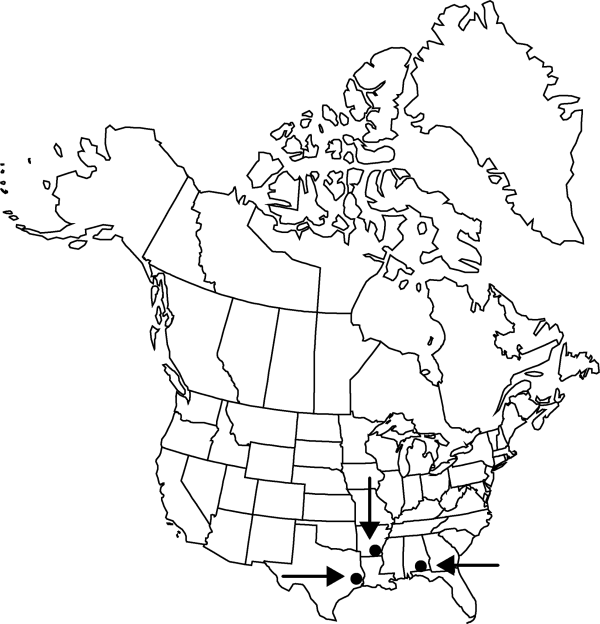Difference between revisions of "Dysphania carinata"
Ukrayins’k. Bot. Zhurn., n. s. 59: 382. 2002.
FNA>Volume Importer |
imported>Volume Importer |
||
| (3 intermediate revisions by 2 users not shown) | |||
| Line 6: | Line 6: | ||
|place=59: 382. 2002 | |place=59: 382. 2002 | ||
|year=2002 | |year=2002 | ||
| + | }} | ||
| + | |special_status={{Treatment/ID/Special_status | ||
| + | |code=I | ||
| + | |label=Introduced | ||
}} | }} | ||
|basionyms={{Treatment/ID/Basionym | |basionyms={{Treatment/ID/Basionym | ||
|name=Chenopodium carinatum | |name=Chenopodium carinatum | ||
|authority=R. Brown | |authority=R. Brown | ||
| + | |rank=species | ||
|publication_title=Prodr., | |publication_title=Prodr., | ||
|publication_place=407. 18 10 | |publication_place=407. 18 10 | ||
| Line 28: | Line 33: | ||
|elevation=10-100 m | |elevation=10-100 m | ||
|distribution=Ala.;Ark.;Tex.;native to Australia. | |distribution=Ala.;Ark.;Tex.;native to Australia. | ||
| + | |introduced=true | ||
|tables= | |tables= | ||
|references= | |references= | ||
| Line 36: | Line 42: | ||
-->{{#Taxon: | -->{{#Taxon: | ||
name=Dysphania carinata | name=Dysphania carinata | ||
| − | |||
|authority=(R. Brown) Mosyakin & Clemants | |authority=(R. Brown) Mosyakin & Clemants | ||
|rank=species | |rank=species | ||
| Line 51: | Line 56: | ||
|publication title=Ukrayins’k. Bot. Zhurn., n. s. | |publication title=Ukrayins’k. Bot. Zhurn., n. s. | ||
|publication year=2002 | |publication year=2002 | ||
| − | |special status= | + | |special status=Introduced |
| − | |source xml=https:// | + | |source xml=https://bitbucket.org/aafc-mbb/fna-data-curation/src/2e0870ddd59836b60bcf96646a41e87ea5a5943a/coarse_grained_fna_xml/V4/V4_503.xml |
|genus=Dysphania | |genus=Dysphania | ||
|section=Dysphania sect. Orthospora | |section=Dysphania sect. Orthospora | ||
Latest revision as of 22:58, 5 November 2020
Stems erect to ascending, branched, 3–5.5 dm, pilose with glandular trichomes or sessile glands. Leaves aromatic; petiole 0.5–1.4 cm; blade ovate to broadly ovate, 0.9–1.6 × 0.8–1.4 cm, somewhat reduced in inflorescence, base cuneate to truncate, apex acute, glandular-puberulose and pilosulose on veins. Inflorescences axillary glomerules; glomerules subglobose, 1.5–2.5 mm diam.; bracts leaflike, ovate, 3–5 mm, margins crenate-dentate, apex acute. Flowers: perianth segments 5, distinct nearly to base, distinct portions narrow-oblong, prominently keeled especially apically, 0.8–0.9 × 0.3–0.4 mm, apex acute, not crested, covered with septate hairs, becoming coriaceous and white in fruit; stamens absent or 1; stigmas 2. Achenes ovoid; pericarp adherent, membranaceous, slightly rugose. Seeds reddish brown, ovoid, 0.6 × 0.3–0.4 mm, margins keeled over radicle and channeled over cotyledons; seed coat smooth.
Phenology: Fruiting fall.
Habitat: Waste areas on roadsides, sandy soils
Elevation: 10-100 m
Distribution

Introduced; Ala., Ark., Tex., native to Australia.
Discussion
Selected References
None.